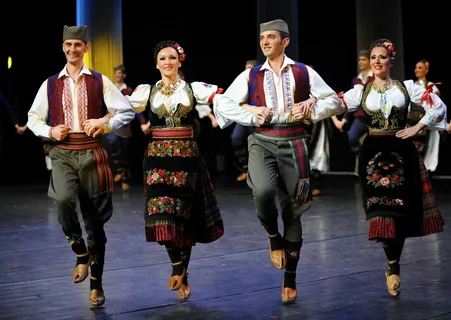
Music and dance have always been fundamental to human expression, weaving stories, emotions, and cultures together across generations. Traditional music and dance, in particular, serve as vibrant windows into the customs, values, and histories of societies around the world. These art forms are more than just entertainment; they are the heartbeat of communities, echoing their identity, struggles, celebrations, and aspirations.
The Richness of Traditional Music
Traditional music is a living, breathing manifestation of culture passed down through generations. Whether it’s the haunting melodies of the Irish jig, the rhythmic drumming of West Africa, or the delicate strings of the Chinese guzheng, each culture has developed its unique musical styles rooted in centuries of history.
One of the most compelling aspects of traditional music is its deep connection to the land and people it comes from. For example, Native American music often incorporates natural sounds, like the wind or the call of birds, to reflect the sacred bond between the community and nature. In the Andes mountains, the haunting sound of the pan flute evokes the spirituality and connection to the environment that indigenous South American cultures have cherished for centuries.
Traditional music is also a powerful tool for preserving oral history. Songs, often accompanied by storytelling, carry stories of past struggles, triumphs, love, and loss. For instance, African American spirituals and folk songs were not only a form of expression but also a method of resistance during times of slavery. They provided hope, solidarity, and a means of covert communication.
The Elegance and Energy of Traditional Dance
Just as music tells a story, so does dance. Traditional dances often represent a unique form of storytelling, where every step, gesture, and movement is loaded with symbolism. In many cultures, dance is a sacred practice, performed to honor the gods, celebrate life’s milestones, or mark seasonal changes.
Consider the intricate footwork of the Flamenco dancers in Spain, or the powerful, hypnotic movements of the Sufi whirling dervishes. In both cases, dance is not just a physical act, but a spiritual journey that allows participants to express deep emotions or connect with something greater than themselves.
In other traditions, like the Hawaiian hula dance, each movement of the hands and hips tells a specific part of a story, with performers often invoking the natural elements such as the sea, sky, and forest. Similarly, the Kathak dance of India uses precise footwork, spins, and storytelling through facial expressions, all to convey ancient tales from Hindu mythology.
What makes traditional dance so unique is its communal aspect. It’s not just about the individual performer but the connection they share with the community. Whether it’s the synchronized steps of a group performance or the solo acts within a cultural context, traditional dances encourage participation and unity. They strengthen the ties that bind people together, allowing them to celebrate their collective heritage.
The Importance of Preserving Traditional Music and Dance
In an era dominated by globalization and modern technologies, traditional music and dance are at risk of fading into the background. The rapid spread of pop culture, digital media, and mass entertainment often overshadow the more localized, traditional forms of expression. However, there is a growing movement to preserve and revitalize these cultural treasures.
Governments, cultural institutions, and individuals are working tirelessly to safeguard these art forms. UNESCO has designated certain traditional music and dance practices as part of the Intangible Cultural Heritage of Humanity, recognizing their value in maintaining cultural diversity and human creativity. Local festivals, community centers, and educational programs also play a vital role in passing on these traditions to younger generations.
Moreover, the fusion of traditional music and dance with modern genres has led to exciting new forms of expression. Artists around the world are blending ancient rhythms with contemporary sounds, creating new hybrid forms that celebrate both the past and the present. This cross-pollination ensures that traditional music and dance remain relevant while also allowing them to evolve with time.
Conclusion
Traditional music and dance are timeless expressions of cultural identity that continue to resonate with people around the world. They are a powerful means of storytelling, preserving history, and celebrating community. As we move forward in an increasingly globalized world, it’s essential that we honor and preserve these traditions, ensuring that future generations can experience the beauty and richness they offer. Whether through a simple folk tune or an elaborate ceremonial dance, traditional music and dance remind us of our shared humanity and the enduring power of artistic expression.



